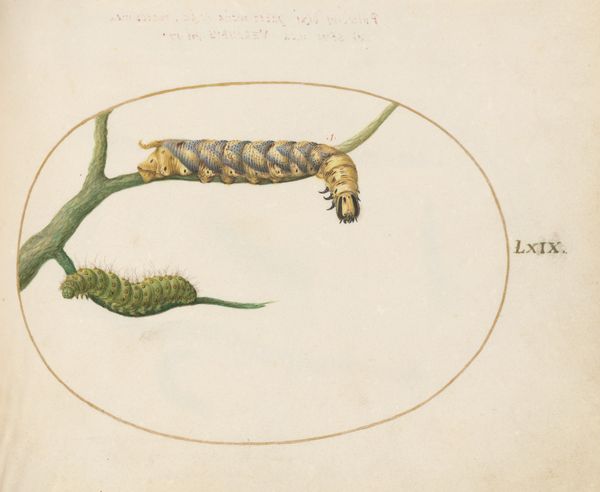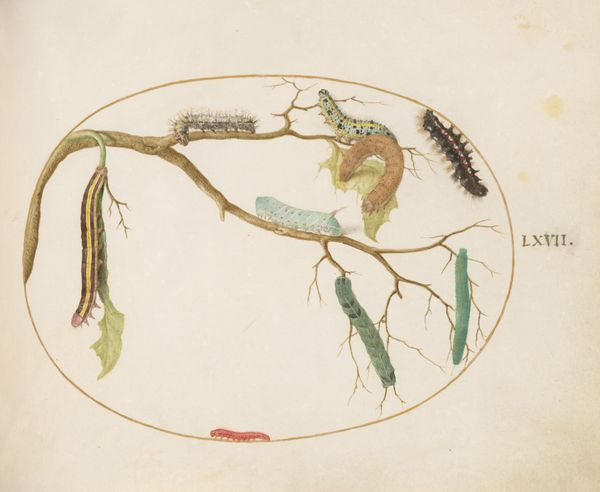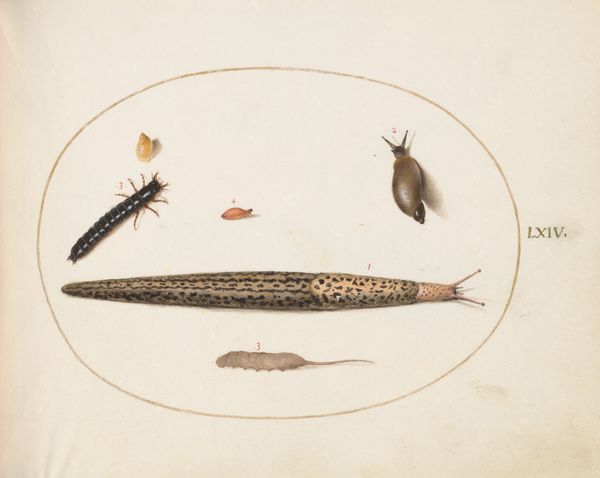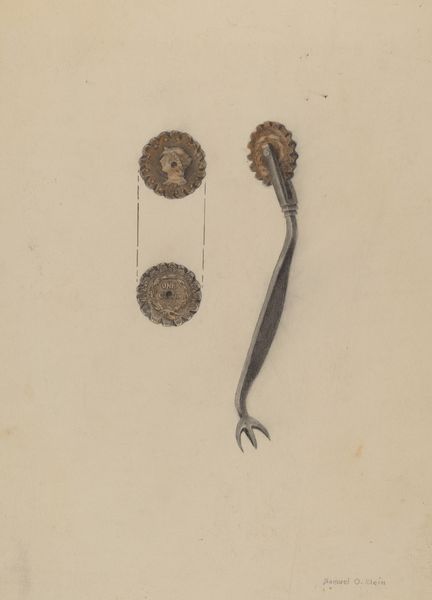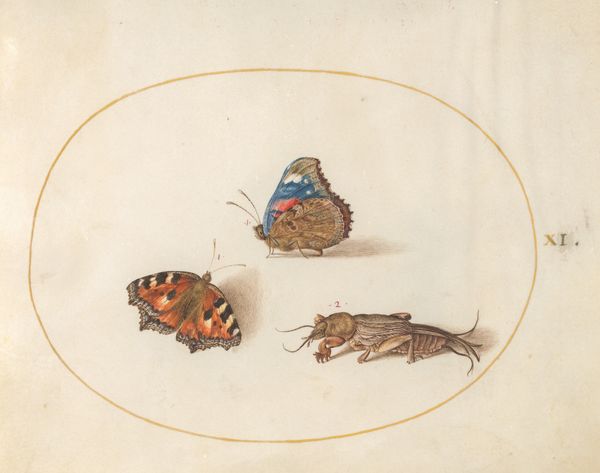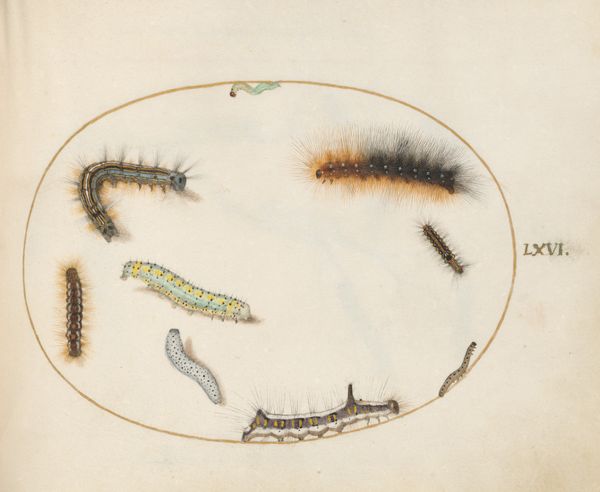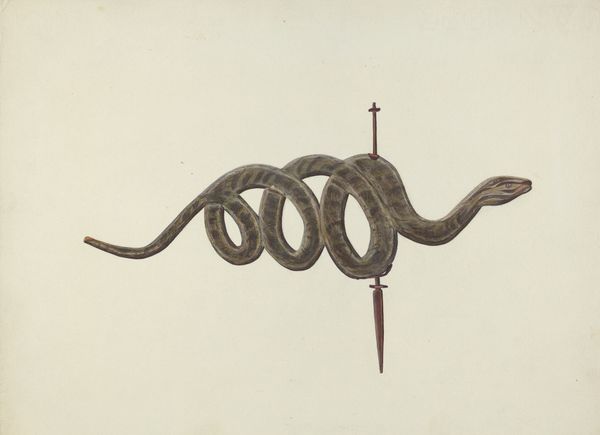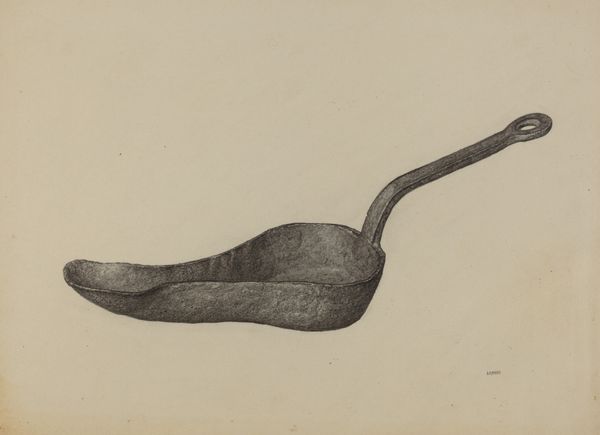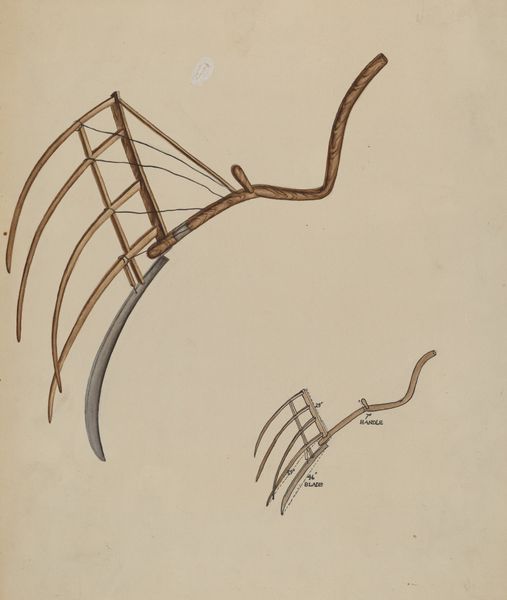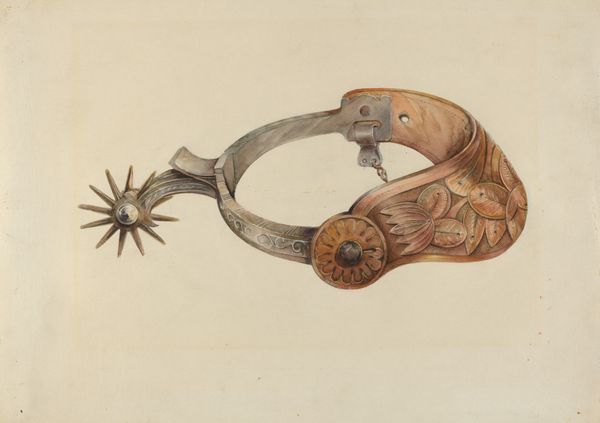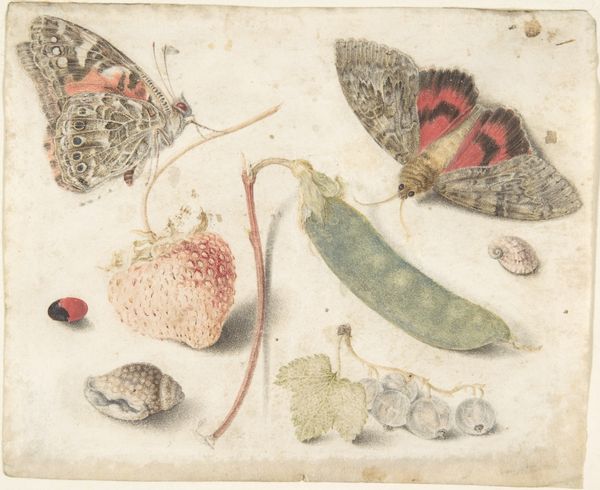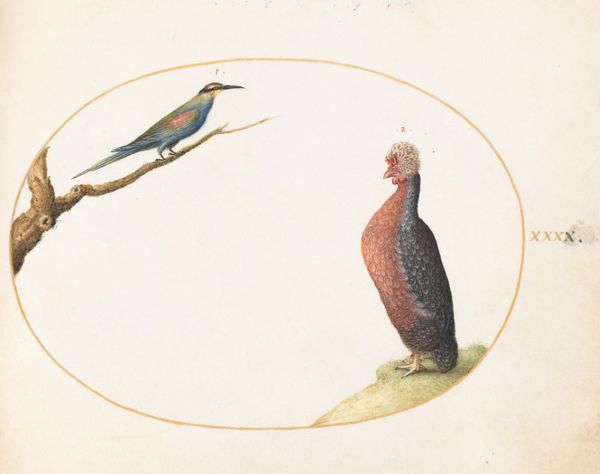
Plate 60: Leafy Spurge Hawkmoth Caterpillar, Pupae, and Other Caterpillars c. 1575 - 1580
0:00
0:00
drawing, coloured-pencil, watercolor
#
drawing
#
coloured-pencil
#
mannerism
#
figuration
#
watercolor
#
coloured pencil
#
watercolour illustration
#
watercolor
Dimensions: page size (approximate): 14.3 x 18.4 cm (5 5/8 x 7 1/4 in.)
Copyright: National Gallery of Art: CC0 1.0
Curator: Welcome. We are standing before "Plate 60: Leafy Spurge Hawkmoth Caterpillar, Pupae, and Other Caterpillars" by Joris Hoefnagel, created around 1575-1580 using watercolor and colored pencil. Editor: My immediate impression is of meticulous detail; each caterpillar appears almost jewel-like. The colors are striking, but there’s also a slightly unsettling quality to their realistic depiction within that perfect oval frame. Curator: Indeed. Consider Hoefnagel's choice of medium; the watercolor lends itself to delicate rendering, but the coloured pencil suggests a precision, a need to catalogue, mirroring the period’s fascination with the natural world and its documentation. It speaks of a labor-intensive process of capturing detail. Editor: And the symbolism! The caterpillar itself, a creature of transformation. Notice how he includes the pupae alongside the larval forms? The entire image becomes an allegory of metamorphosis, rebirth. Perhaps even hinting at spiritual transformation? Curator: While tempting to read overtly symbolic meaning, consider that these kinds of images often circulated within wealthy intellectual circles, places where knowledge about, and perhaps even the owning of the materials which created the artwork would’ve been quite valued. What can this plate tell us about class structure at that time? Editor: I can see your point. Yet, that doesn't diminish the power of these specific life stages visually juxtaposed within the composition, how they echo the cyclical nature of existence; those specific species carry layered connotations even if viewed simply as documentation of nature. The Hawkmoth itself is strongly linked to the concepts of strength and swiftness. Curator: Of course. But the sheer amount of painstaking time someone needed to observe and reproduce nature also has bearing here. We see not just Hoefnagel’s technical skill, but also his access to certain materials and patrons who would commission such meticulous artwork. The material realities give depth to these symbols, allowing them a new and valuable perspective. Editor: Agreed. These insights of artistic vision are fascinating, the dance between what it represents and what was put in by design, conscious or unconscious. Curator: This Mannerist plate shows just how multifaceted and engaging the historical context of artwork can be.
Comments
No comments
Be the first to comment and join the conversation on the ultimate creative platform.
